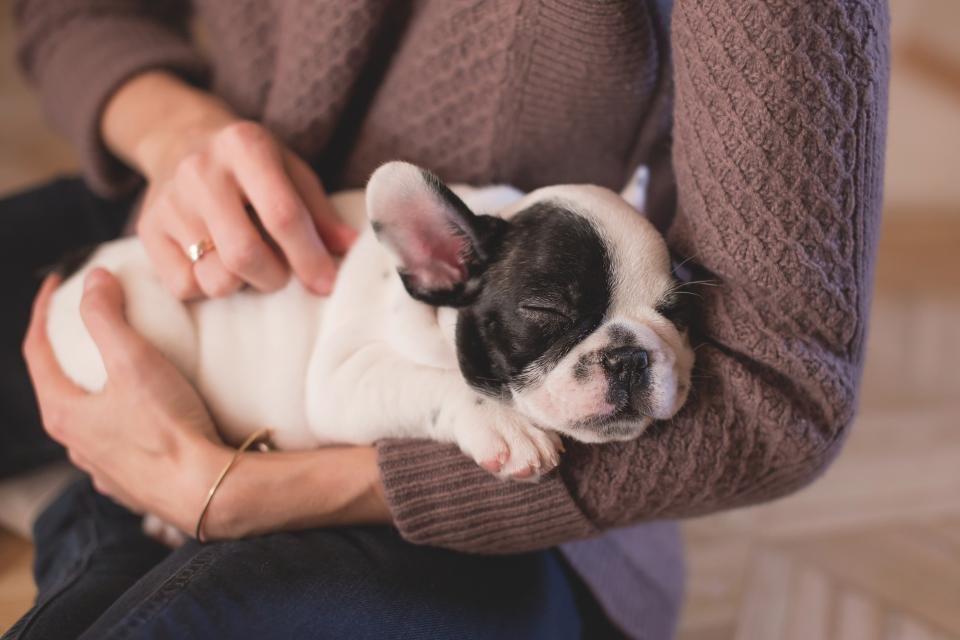Your furry best friend does something remarkable every single day that you might not even notice. They quietly adjust their entire world to match yours, especially when it comes to sleep. Think about it: your dog somehow knows when it’s time to settle down for the night, even though they don’t wear a watch or check their phone. This incredible adaptation isn’t just cute behavior – it’s actually a fascinating blend of evolution, biology, and the deep bond you share together.
During domestication, dogs developed circadian rhythms remarkably similar to humans, with both species following diurnal patterns of being active during the day and resting at night. Your dog has essentially rewired their internal clock to be compatible with your lifestyle. Let’s explore this amazing process and discover what makes your four-legged companion such an adaptable sleep partner.
The Science Behind Canine Sleep Synchronization
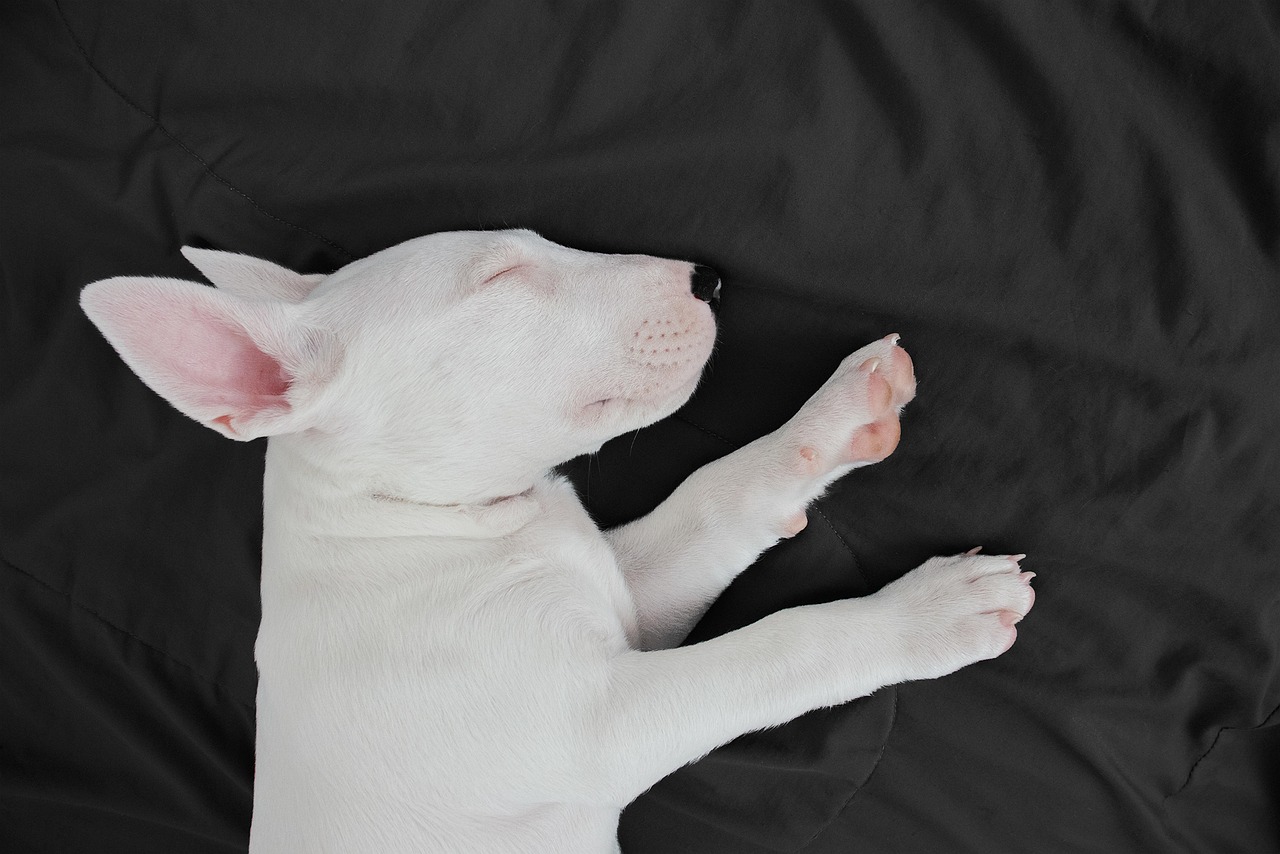
Dogs’ circadian rhythms are remarkably similar to humans’, and experts believe these canine cycles adapted to human cycles during domestication. This biological synchronization goes far beyond simple habit formation. In terms of circadian rhythms, dogs are the ultimate shape-shifters and adapters, and this adaptability in sleep patterns is perhaps one of the many reasons why dogs have become our best friends.
Captive wolves, like dogs, typically have a diurnal circadian rhythm, adapting their sleep-wake cycle to the feeding regimes and human activity in their environment, with sleep in dogs appearing to be determined by human lifestyle and situational factors. Because domesticated dogs have flexible sleep schedules, they often adjust their sleep times so they are awake and able to spend as much time with you as possible.
Reading Your Daily Rhythms and Routines

Your behavior and routines will clue dogs into the time of day, as dogs know time is passing through their daily routine and can recognize patterns. You can tell your dog knows time has passed by key behaviors: they perk up at scheduled feeding time, walk to the door when someone usually comes home, get excited for walks at typical times, and can tell the difference between day and night.
Activity studies reveal variation in routines for dogs in the home that track with differing human schedules during timeframes such as weekdays and weekends, with companion dogs offering a unique comparative model as activity fluctuates with human-based changes to routine. Your dog becomes an expert at detecting the subtle cues that signal different parts of your day. They notice when you start your morning coffee routine, when you grab your keys, and even the way your energy changes as evening approaches.
The Polyphasic Sleep Pattern Advantage
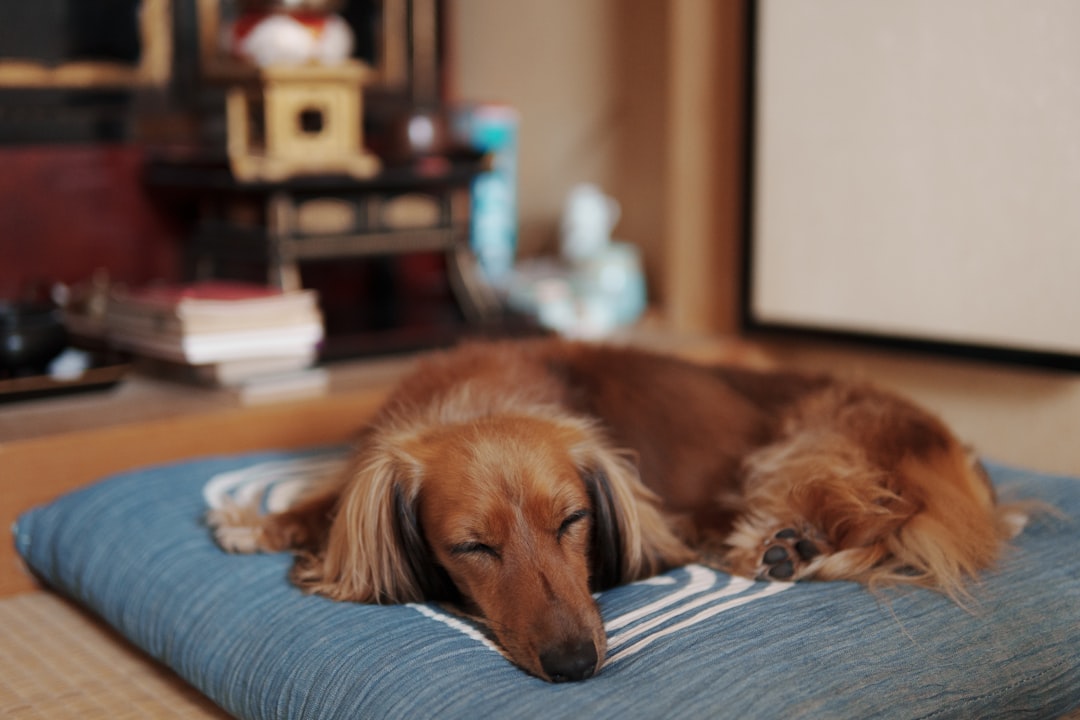
Dogs are polyphasic sleepers, meaning their sleep is divided into several blocks during a period, with sleeping bouts observed during the day. This means they may sleep about 7-8 hours each night while you’re resting too, but they still need more sleep on top of that, usually another 4-6 hours, making up that time while you’re away during the day or napping during less active times.
Dogs spend most of their sleep time in an awake but readily alert stage, and while humans spend 25 percent of sleep time in REM, dogs only spend about 10 percent, meaning they get less deep quality REM sleep and therefore need more time to get the rest they need. This flexible sleep architecture allows them to be available whenever you need them while still meeting their biological sleep requirements.
Physical Cues That Signal Sleep Time
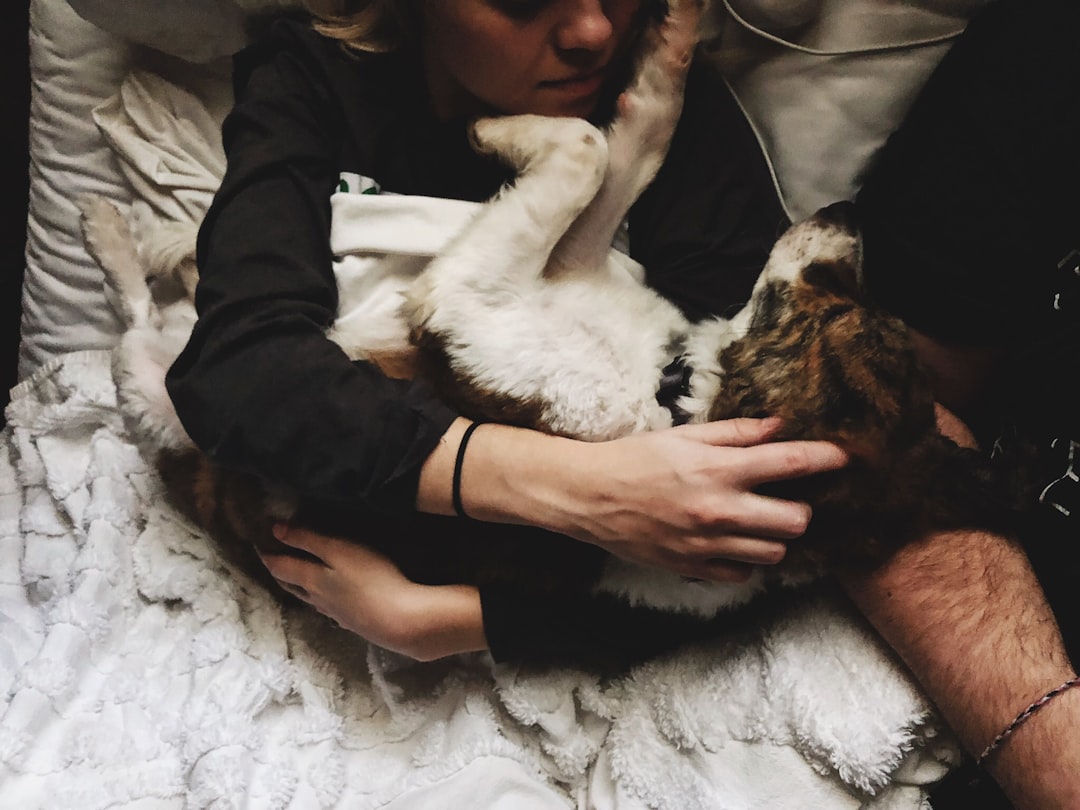
Dogs recognize that their owners are sleeping through changes in breathing patterns and heart rate, as human respiration generally slows during rest and dogs can detect these auditory and biochemical shifts with their sensitive hearing and sense of smell. Dogs also use visual cues like altered human posture and movements, noting that humans exhibit markedly different body language when awake versus in slumber, lying down instead of being upright and showing muscle relaxation and decreased motility.
Your dog becomes incredibly attuned to these physical changes in your body. They can sense when your muscles start to relax, when your movements become slower and more deliberate, and when you begin winding down for the evening. This heightened awareness helps them anticipate your bedtime routine even before you consciously decide it’s time to sleep.
Environmental Factors That Influence Sleep Adaptation

Research shows that dogs eating twice a day, especially in the evening, may have worse sleep quality and increased nighttime activity compared to dogs eating once daily in the morning, with evening feeding also increasing early morning activity and pushing wake time earlier. Exercise can inhibit melatonin secretion when done hours before bedtime, and activities with high emotional valence up to 2 hours prior to bedtime can reduce sleep quality in dogs.
Research shows that dogs sleeping indoors rather than outdoors or in a shed have better sleep quality, whether due to lack of disturbances or the reassuring presence of the human tribe. Your home environment, lighting conditions, and even the ambient sounds of your household all contribute to how well your dog synchronizes with your sleep schedule.
The Behavioral Synchronization Phenomenon

Pet dogs spontaneously synchronized their location and activity with their owners, as dogs are sensitive to human cues and share strong affiliative bonds with their owners, synchronizing their location, activity, and temporal changes when allowed to move freely. Some dogs even synchronize their sleep schedule to that of their owner so they can remain close by both day and night.
The results confirmed several specific types of behavioral synchrony found between dogs and their owners, showing that dogs and humans are capable of behavioral synchronization beyond verbal cues much like mothers and infants do. This synchronization extends far beyond sleep, creating a harmonious daily rhythm that benefits both you and your canine companion.
Age-Related Changes in Sleep Adaptation

Dogs aged 16 weeks slept for significantly longer during the day and in total over a 24-hour period but for less time during the night than dogs at 12 months, with owners of 16-week-old puppies perceiving their dogs to sleep longer during the day. Dogs will adjust their sleep schedules to suit their circumstances within reason depending on your habits, though any sudden shift in their habits may indicate an issue.
Dogs exhibit biorhythms like diurnal sleep/wake and rest/activity behavior patterns with circadian rhythmicity and show age-dependent changes in activity rhythms, with all dogs demonstrating a circadian activity pattern of high daytime activity and low nighttime activity. As your dog ages, you might notice subtle changes in how they adapt to your schedule, but their fundamental ability to synchronize with your rhythms typically remains strong throughout their lives.
Creating the Perfect Sleep Environment Together

Creating a sleep routine that works for both you and your dog requires understanding and accommodation from both sides. Most commonly, dogs are settled to sleep at night by being left in a room or area within the home without human company, though there’s an increase in dogs being settled to sleep in a bedroom with human company as they mature. Whether your dog sleeps in your bedroom, on your bed, or in their own designated area, consistency is key.
Consider your dog’s individual needs while maintaining boundaries that work for your household. Some dogs thrive with the security of being close to their human family, while others are perfectly content in their own space. The most important factor is establishing a routine that signals to your dog when it’s time to wind down, helping them synchronize their natural sleep patterns with your schedule.
Conclusion
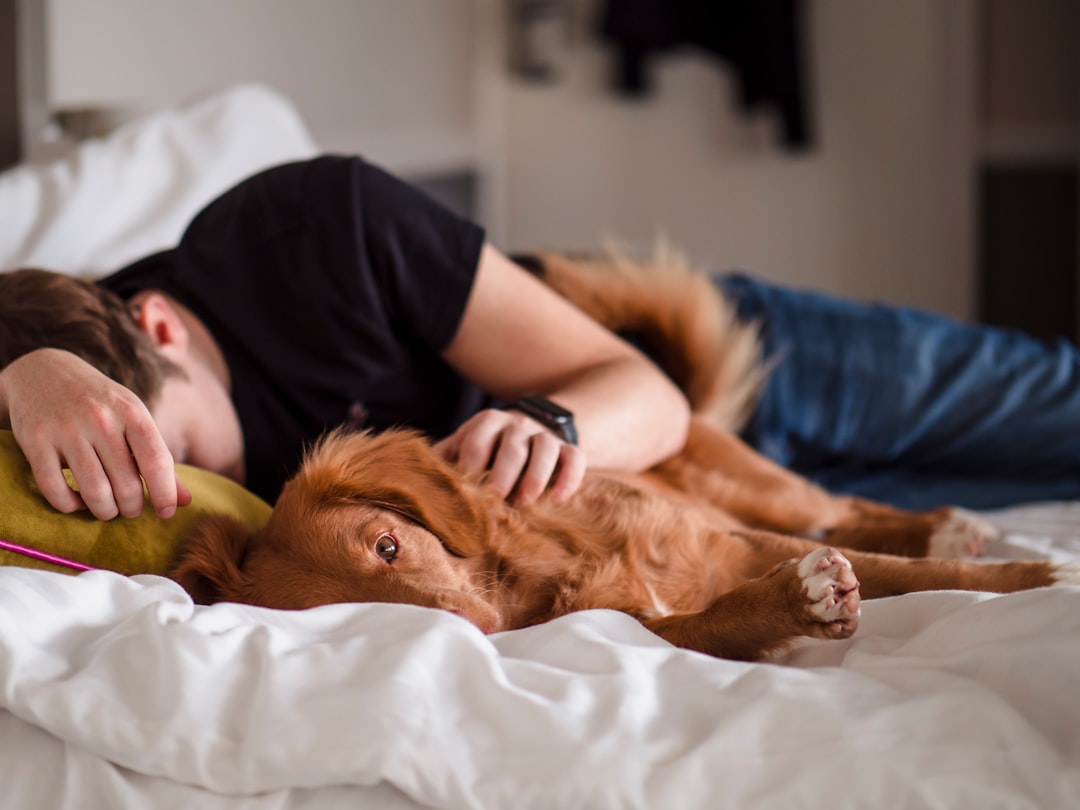
The way dogs adapt to our sleep schedules is nothing short of remarkable. Through thousands of years of evolution and domestication, they’ve developed an incredible ability to read our cues, sync with our rhythms, and adjust their biological clocks to match our daily routines. This adaptation goes beyond simple training or conditioning – it’s a deep biological and emotional synchronization that strengthens the bond between human and canine.
Understanding this process helps us appreciate just how much our dogs invest in being our companions. They literally reshape their sleep patterns, one of the most fundamental biological processes, to stay connected with us. By recognizing and respecting their efforts while creating supportive sleep environments, we can ensure this beautiful synchronization benefits both species.
What do you think about your dog’s incredible ability to adapt to your schedule? Have you noticed specific ways your furry friend has synchronized with your daily rhythms?

Gargi from India has a Masters in History, and a Bachelor of Education. An animal lover, she is keen on crafting stories and creating content while pursuing a career in education.

